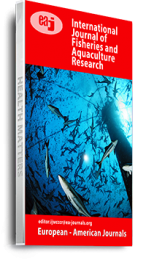This study provides information on the content of meHg in freshwater fish and seafood, also documented fish and seafood consumption pattern by different demographic background (age, ethnicity, gender). A possible alert regarding on human health hazards were evaluated and results were compared with the Provisional Tolerable Weekly Intake (PTWIs) and through the parameter of Hazard Quotient (HQ). Results showed that meHg levels of 67 species ranged from 0.013 to 0.252 mg/kg of wet weight (WW) with significant variations exist in different fish and seafood groups (c2KW = 49.09; p<0.001). Median concentrations of meHg in fish and seafood groups in descending orders: demersal fish (0.1006 mg/kg WW) > pelagic fish (0.0686 mg/kg WW) > freshwater fish 0.045 mg/kg WW) > cephalopods (0.0405 mg/kg WW) crustaceans (0.0356 mg/kg WW). Results revealed that older population (> 40 years old) consumed significantly (p = 0.000) more fish compared to younger generations and the elderly consumed the highest amounts of fish (104.0±113.0 g/day). The adolescents (10-17 years old) consumed more than double of amount for both cephalopod and crustacean compared to the older populations (p < 0.05). Malay ethnic (96.1±99.6 g/day) consumed significantly (p=0.000) higher amounts of fish and seafood compared to other ethnicity, similarly to male subjects (95.2±102 g/day; p = 0.026) when compared to the female (86±96.3 g/day). The estimated weekly intake (EWI) values showed results of below 1.6 µg/kg BW/week, the tolerable levels recommended by the Joint FAO/WHO Expert Committee on Food Additives (JECFA) for all different demographic factors except for higher consumers at 75th percentile and above. Consumption of marine fish contributed to higher value of PTWI to all different demographic groups (the estimated weekly intake (EWI) range: 0.2988-0.6893 µg/kg BW/week) but for the adolescents, where from the consumption of crustaceans (0.3488 µg/kg BW/week or 21.8% of PTWI) and cephalopods (0.504 µg/kg BW/week or 31.5% of PTWI). Results from this study also revealed the HQ value for overall consumption of fish and seafood by the adolescents and elderly exceeded one. This was contributed from the consumption of demersal fish and cephalopods, thus indicating the non-acceptable level of non-carcinogenic adverse health effects.
Keywords: Fish, Malaysia, Methyl mercury, exposure assessment, food safety, seafood

